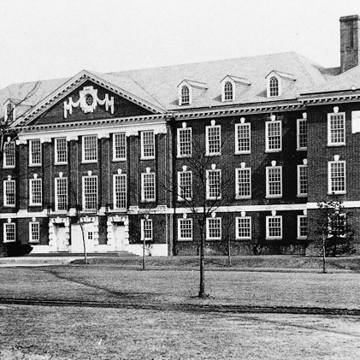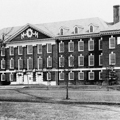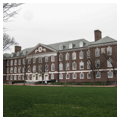The first structure to be erected in the Day and Klauder plan, this 45,000-square-foot agriculture building originally housed science laboratories, classrooms, and an auditorium. Its hipped-roof, five-part massing—a seventeenth-century English country house type with central pediment and pilasters—recalls the Law School at the University of Pennsylvania (1899–1900) by Cope and Stewardson, for whom Klauder had worked. Wolf Hall also resembled laboratories at Johns Hopkins University, Baltimore, for which school Day served as advisory architect. Perhaps the University of Delaware's most architecturally distinguished building, it stands near the middle of the long Green, lined until recently by the great elms of 1917. Wolf has been restored (2002–2003, Ayers/Saint/Gross). Across the Green diagonally is a domed auditorium, Mitchell Hall (1927–1930, Charles Z. Klauder).
You are here
Wolf Hall
If SAH Archipedia has been useful to you, please consider supporting it.
SAH Archipedia tells the story of the United States through its buildings, landscapes, and cities. This freely available resource empowers the public with authoritative knowledge that deepens their understanding and appreciation of the built environment. But the Society of Architectural Historians, which created SAH Archipedia with University of Virginia Press, needs your support to maintain the high-caliber research, writing, photography, cartography, editing, design, and programming that make SAH Archipedia a trusted online resource available to all who value the history of place, heritage tourism, and learning.





